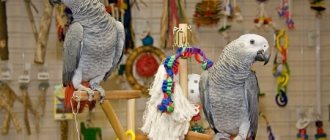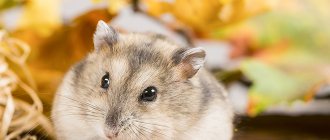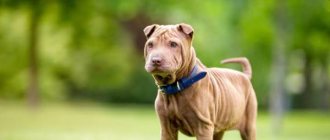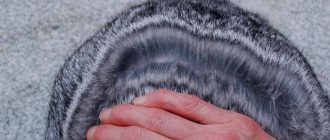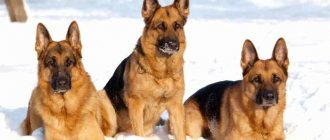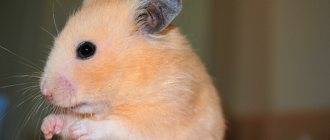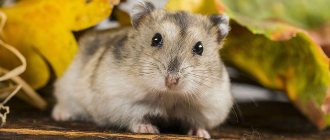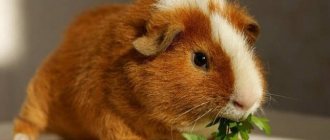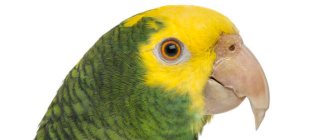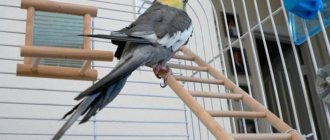How long does a cockatiel live in the wild?
Many people believe that Australia, the homeland of cockatiels, is a blessed country with an abundance of water in rivers, warm air, a variety of trees and shrubs rich in tasty fruits. On the one hand this is true, on the other hand it is not.
How long cockatiels live in their natural environment is influenced by the conditions in which they have to look for food and hide from enemies.
- Parrots often face drought and the need to travel many kilometers in search of clean water and plentiful food. Not everyone is able to fly long distances tirelessly and die. Many birds drink contaminated water and then die from outbreaks of epidemics.
- Predators that pose a danger to cockatiels include eagles, falcons, and peregrine falcons. Nymphs fly slowly and they have practically no chance of flying away from fast birds of prey, and especially from the fastest bird in the world - the peregrine falcon.
- Many birds fall into the hands of hunters, who catch them and then sell them, or simply eat them.
- For farms, attacks by hungry parrots can be quite destructive, which is why they are exterminated as pests.
- Forest fires that often break out during drought are also destructive for birds.
Therefore, it is not surprising that the life expectancy of a Corella parrot in the wild does not exceed 10 years.
Features of keeping Corella parrots boy and girl
When purchasing a mixed-sex pair, it is important to understand that this will eventually lead to the appearance of chicks. Therefore, first you need to properly equip the place where the parrots are kept.
First, you need to purchase not an ordinary cage, but a so-called cage, which has a flat roof and a hole on one of the walls, except the front one, so that when the time comes to hang the nesting device.
In the nymphs' home, the length of the cage should be twice as wide as the width, so that when flying from perch to perch, muscles are strengthened and metabolism is improved, which will have a positive effect on the health of the offspring.
A mixed-sex pair of cockatiels will quickly have offspring
How long do cockatiels live at home?
At home, parrot owners are responsible for providing food, clean water and protection from dangers. How many years a cockatiel nymph will live in captivity depends on the owner’s experience and his ability to create favorable conditions for his pet. Typically, their life expectancy averages 16-18 years.
If the owner tries and brings the parrot’s living conditions to almost ideal, and, of course, if the bird’s genetics are also good, there is a chance that the number of years of life of the cockatiel will increase to the thirty-year mark.
At one time, the British magazine International Zoo Yearbook provided information about a parrot that lived for 35 years, but so far no more information has appeared about the same centenarians.
Who lives longer: male or female?
The lifespan of a male cockatiel is slightly longer than that of a female. Life expectancy here is influenced by physiological features. The ability of females to lay eggs leads to wear and tear on their bodies.
In their natural habitat, birds are guided by natural factors and have offspring during the rainy season, when there is a lot of food. In captivity, owners often provoke cockatiels to reproduce. The main thing is that they take into account that in order for females to recover after reproducing offspring, a break between laying eggs is necessary for at least six months, and preferably a year.
Why does the Corella parrot scream, tremble, hiss, and pluck its feathers?
Such actions of a parrot are typical if it is experiencing stress . It often happens that, having acquired a pet, the owners do not allow the bird to get used to the new environment, but begin to stick their hand into the cage, thinking that this way it will adapt faster.
However, the cockatiel perceives these actions as a threat and begins to scream and hiss, hoping to scare the uninvited guest, while shaking and plucking feathers indicates an extreme form of excitement.
Therefore, in order not to give your parrot a heart attack, you need to gradually tame it: first to your presence next to the cage, then to your voice, let it out more often and talk all the time.
When stressed, a cockatiel may tremble, hiss, or pull out its feathers.
What does life expectancy depend on?
If you are concerned about how many years a Corella parrot can live in captivity, make sure that the conditions for keeping it are safe. It is important to be prepared for the fact that you will have to spend a lot of time with the bird, communicate and care for it, and patiently endure its endless chatter and screams. A domesticated parrot should have the opportunity to fly around the room from time to time, and the bird should not be kept in a cage that is too small.
Cell
When choosing a home for a parrot, you need to proceed primarily from the size of the pet. Considering that a cockatiel can grow up to 30-33 cm, it needs a fairly spacious metal cage or a rectangular enclosure. Approximate dimensions are 40x50x100 cm. It would be good if the cage had a retractable tray - this would make it easier to clean the pet’s apartment.
The cage should not be installed in a draft, not in direct sunlight and away from heating devices.
Inside the cage you need to equip it with the necessary accessories:
- feeders for different types of food;
- automatic drinker (better if it is vacuum);
- perches made from fruit tree branches untreated from bark;
- toys (ladders, ropes, swings, mirrors, rattles in the form of balls, bells, etc.);
- bathtub for bathing.
If you do not want to place a bathtub in the cage, from time to time give your pet water treatments in the bathtub under a shower or tap, or spray him with water from a spray bottle.
Diet
With a varied and balanced diet, cockatiels live much longer than those birds whose diet is poor and monotonous. Nymph parrots are granivores, therefore the basis of their diet is grain feed.
Fresh fruits, citrus fruits, vegetables, herbs (especially celery, dandelion leaves and carrot tops) will perfectly enrich your bird’s diet with useful substances.
If the birds are not busy breeding, they can be given cottage cheese and eggs no more than once a week.
Attention! Never feed your parrots human food or food from your table. Bird food should be as natural as possible.
It is important to give your cockatiel vitamin and mineral supplements in courses - this will affect how long it will live in your home.
Environment
The microclimate in the room where the cockatiel lives is another important factor influencing the lifespan of the parrot. The room temperature should not be lower than +18°C, but preferably not higher than +25°C, try to keep the air humidity at 70%.
Diet
The cockatiel menu should be as close to natural as possible. This means that the diet should be dominated by:
Grain feed (millet, hemp seed, oats, corn, canary grass). The average rate of grain feed is 1.5-2 tablespoons daily. The last number is for a large parrot.
Vegetables (cucumbers, carrots, Brussels sprouts).
Fruits (Plums, apples, peaches, pears, cherry plums). The parrot is partial to these fruits.
In small quantities, you can add wheat grains, sunflower seeds, nuts and legumes soaked in water. Sometimes you can gradually give animal products - boiled eggs and low-fat cottage cheese. Birds especially need animal protein during nesting.
Prohibited Products
The list of foods that cockatiels should not eat includes:
- Candied fruits.
- Seeds of stone fruit crops.
- Hot peppers.
- Milk, cheese, butter, sour cream.
- Spices.
- Potato.
- Mushrooms.
- Branches of conifers, oak, viburnum, pear, lilac, poplar.
- Sorrel and rhubarb.
Causes of early death
Before getting a cockatiel parrot, you should study information about the rules of care and maintenance, read reviews from the owners, so as not to destroy the bird through improper actions and negligence. The causes of premature death of a parrot at home can be:
- inattention to the symptoms of cockatiel diseases, and, as a result, an advanced disease with a fatal outcome;
- ventilating a room with a parrot in it, which can lead to a cold;
- an unclosed window through which the parrot flew away;
- poor quality feed and contaminated water;
- electric shock due to chewing wires;
- direct rays of the sun falling on a cage with a pet left on the windowsill;
- parrot injuries: a bird that was not accustomed to its new environment was released to fly around the room and it flew into a mirror, window glass or furniture;
- inattention of the owner: they slammed the door without noticing the pet sitting on it and crushed it;
- poisoning from poisonous houseplants, building materials or medications to which the parrot had access;
- getting into containers with water in which the bird can drown (pots of soup, toilet, bucket, etc.);
- lack of care and attention from the beloved owner, which causes the bird to become depressed.
As you can see, the responsibility for how many years your cockatiel will live with you depends on your attentiveness, care and knowledge.
Microclimate
Corellas come from Australia, whose climate is strikingly different from central Russia. Therefore, in summer, cockatiels need 10-12 hours of daylight, and then cover the cage with a dark cloth. And in winter you will have to use an ultraviolet lamp so that the bird gets enough light.
Under no circumstances should you leave your parrot's cage in the sun on a hot day - this can lead to catastrophic consequences. You also cannot leave them in a cold room in winter - they will simply freeze.
As for humidity, there are no problems with it in the hot season, but in winter the air in apartments is drier, you need a humidifier. If the air is too dry, females have difficulty giving birth.
How to extend the life of a cockatiel
The ideal conditions for a long and healthy life for a cockatiel at home would be:
- a spacious cage with all the necessary accessories, which are regularly cleaned of dirt and disinfected;
- quality food and water; Once you get a cockatiel, you should not skimp on food for it - this directly affects how long it will live with you;
- communication, caressing, stroking and scratching, approval on your part is the key to the mental health of the parrot;
- timely response to symptoms of trouble in a pet (changes in mood, appearance, droppings, the appearance of discharge from the ears, eyes, cloaca) and contacting a veterinarian;
- creating a comfortable microclimate in your home, especially since temperature, air humidity and the absence of harmful fumes are the conditions for a good and long life not only for cockatiels, but also for their owners.
Caring for a cockatiel is similar to caring for a small child. The bird is completely dependent on you, on the conditions that you create for it to live. You have every chance to prolong your pet’s life and enjoy communicating with him for many years by trying to create ideal living conditions.
It is interesting to learn how to properly keep a cockatiel and check the quality of grain for feeding it in this video:
Stress
Cockatiels have a fairly developed nervous system, which is why they are easily brought to a state of stress. It is necessary to closely monitor your pet's mood, otherwise it is easy to miss the moment when his condition worsens. Emotional depression causes cockatiels to refuse food, they become lethargic and sleep a lot. If the stimulus is too harsh, they may express dissatisfaction by screaming and trying to fly around the cage. Among the provoking factors:
- No flights;
- Voices are too loud;
- Several strangers at the same time;
- Abandoned by the owner;
- Lights turned on during sleep;
- Neighborhood with a bird that has a bad upbringing.
Therefore, if you don’t plan to pay attention to your pet, it’s better not to get a cockatiel. In opposite cases, you need to find a common language with the parrot; they are quite sociable and quickly tamed.
Tips for buying a parrot
When choosing a parrot in a nursery or elsewhere, the sex of the bird can be determined by its color and behavior. As a rule, before 1 year of life, it is very difficult to do this without being a specialist. In this case, it is necessary to take into account that males are noisier, often knock with their beaks, and also make more complex sounds.
Where to buy and what to look for
The Corella parrot can be purchased both in a nursery and from a private breeder. If the parrot is healthy, it has a beautiful and neat appearance, with even plumage that fits tightly to the body, clear eyes and an excellent appetite. The bird is quite active and “verbose”.
If a parrot nervously rushes around in the cage, screams loudly, scratches itself or pulls out feathers, then this is the first sign that something is wrong with the parrot and you should absolutely not buy it. You cannot buy very apathetic individuals, depressed, ruffled, losing coordination or falling over on their side.
Corella parrot price
Australia is considered the homeland of Corella parrots and their export from the country is prohibited by law, so only birds artificially bred in nurseries or from private breeders are sold. The cost of a parrot is not exorbitant, but quite affordable, due to the simple breeding process. For a parrot, 3 months old, you will have to pay an average of 3 thousand rubles.
Migratory or wintering
The photo shows a yellow cockatiel on a branch.
Corellas are capable of covering considerable distances, but they are not migratory birds. In winter in Australia, the thermometer does not drop below 0°C, so birds can easily cope with this time of year. In addition, winter is considered the rainy season, when plants receive sufficient moisture and increase their growth, providing food for birds.
Cockatiels were forced into Europe on ships, but not a single bird left Australia on its own.
Origin of the species and description
Photo: Corella parrot
The first parrots appeared approximately 55-60 million years ago - after the extinction that occurred at the end of the Cretaceous period. Then most of the organisms inhabiting the planet disappeared and, as always after such cataclysms, the surviving species began to change and divide to fill the vacated ecological niches.
The earliest fossilized remains of parrots were discovered in Europe - at that time its climate was tropical and perfect for these birds. But modern parrots did not descend from their European line - it is considered completely extinct - but from another branch.
Video: Corella
How the development of parrots took place has not yet been established clearly enough, although as more and more fossil remains are found, the picture becomes more and more complete - it is interesting that all early finds occur exclusively in the northern hemisphere, although modern parrots live mainly in the southern hemisphere.
It has been established that the part of the brain that allows parrots to imitate other people's sounds, such as human speech, appeared about 30 million years ago. Strictly speaking, before the parrots themselves - approximately 23-25 million years have passed since the emergence of the first modern species.
These fossils can already be clearly identified as corresponding to modern cockatoos, presumably the oldest surviving species of parrot. Most of the others happened much later. The genus and species of cockatiel belong to the cockatoo family. He received a scientific description in 1792, made by the British zoologist R. Kerr. The species name in Latin is Nymphicus hollandicus.
